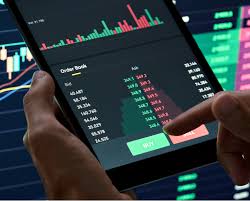
Mastering Crypto Trading Technical Tools: Elevate Your Trading Game
In the fast-paced world of cryptocurrency trading, having the right tools at your disposal can make all the difference. Traders rely on a variety of technical tools to help analyze market trends, predict price movements, and make informed trading decisions. In this article, we will explore some of the most popular and effective technical tools used in crypto trading today. To dive deeper into this topic, Crypto Trading Technical Tools visit website and enrich your trading knowledge.
1. Charting Software
Charting software is perhaps the most essential tool in a crypto trader’s toolkit. These platforms allow traders to visualize price movements through different timeframes, which can provide valuable insights into market behavior. Some popular charting tools include:
- TradingView: A web-based platform that offers advanced charting capabilities, a wide range of technical indicators, and a vibrant community for sharing ideas.
- Coinigy: This tool combines crypto exchange data, charting features, and a portfolio tracker for comprehensive market analysis.
- CryptoCompare: Offers detailed charts and comparative analysis for various cryptocurrencies, enabling traders to make informed decisions.
2. Technical Indicators
Indicators are mathematical calculations that aid traders in making sense of price movements and volume trends. They can serve various purposes, from identifying potential entry and exit points to gauging market sentiment. Some commonly used technical indicators include:
- Moving Averages: These indicators smooth out price data over a specified period, helping traders identify trends. The Simple Moving Average (SMA) and Exponential Moving Average (EMA) are among the most popular types.
- Relative Strength Index (RSI): A momentum oscillator that measures the speed and change of price movements, the RSI helps identify overbought or oversold conditions.
- Bollinger Bands: This tool uses standard deviations to create bands around a moving average, which helps traders spot volatility and price movements.
3. Candlestick Patterns
Candlestick charts provide detailed insights into market psychology. Each candlestick represents price movement within a specific time frame and helps traders visualize open, high, low, and close prices. Learning to recognize various candlestick patterns can give traders an edge. Important patterns include:
- Doji: Indicates indecision in the market, suggesting that a trend change may be on the horizon.
- Hammer: A bullish reversal pattern that appears at the bottom of a downtrend, signaling a potential price increase.
- Engulfing Pattern: A bullish or bearish pattern that occurs when a larger candlestick completely engulfs the previous one, indicating a possible reversal.
4. Order Types

Understanding different order types is crucial for effective crypto trading. These tools help traders execute their strategies more effectively based on market conditions. Common order types include:
- Market Orders: An order to buy or sell immediately at the current market price.
- Limit Orders: An order to buy or sell a cryptocurrency at a specified price or better, providing greater control over entry and exit points.
- Stop-Loss Orders: Designed to limit losses, these orders automatically sell a cryptocurrency when it reaches a specified price.
5. Portfolio Management Tools
Managing a crypto portfolio effectively requires tracking assets, performance, and market trends. Portfolio management tools help streamline these processes. Popular options include:
- Blockfolio (now FTX): A mobile app that allows users to track their cryptocurrency investments in real-time and set up alerts for price changes.
- Delta: Provides a comprehensive portfolio management system that tracks investments and provides detailed analytics.
- CoinTracking: Offers tax reporting features alongside portfolio management tools, making it easier for traders to stay compliant.
6. Backtesting Tools
Backtesting tools allow traders to test their strategies against historical data to gauge their effectiveness before implementing them in live trading. These tools help validate a trading strategy’s robustness. Popular backtesting tools include:
- TradingSim: A simulation platform that enables traders to practice their strategies with real historical data.
- Cryptohopper: This tool provides automated trading and backtesting features, allowing traders to optimize their strategies efficiently.
7. Risk Management Tools
Risk management is fundamental in trading to avoid significant losses. Certain tools can assist in managing risk effectively, including:
- Position Sizing Calculators: These tools help traders determine the optimal position size based on their risk preference and the amount of capital at stake.
- Risk/Reward Ratio Tools: Tools that assist traders in determining the potential reward of a trade relative to the risk taken.
Conclusion
The landscape of crypto trading is constantly evolving, and leveraging the right technical tools is vital for success. Whether you are a beginner or an experienced trader, familiarizing yourself with these tools can enhance your trading strategies and improve your performance in the volatile crypto market. Continuously educate yourself and experiment with different tools to find what works best for your trading style.
![]()

